Brains of this World: Hypothalamus
By Aisha Raja
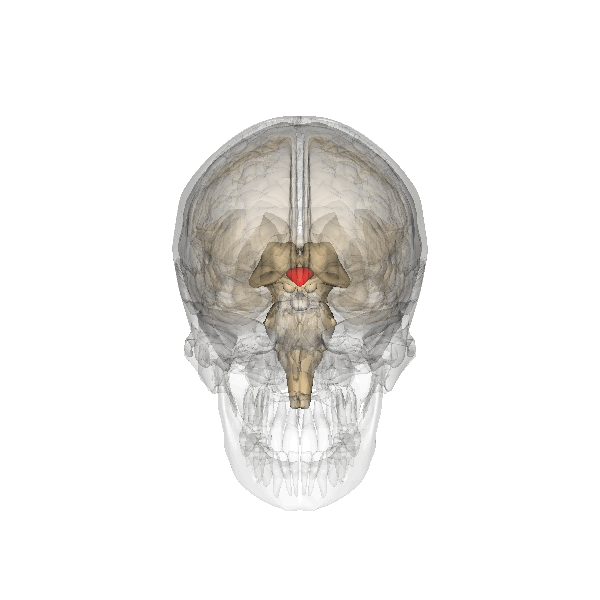
By Aisha Raja

The hypothalamus
The hypothalamus is a small brain structure located in the centre of the brain and it is essential for fundamental life processes and survival. It is part of the limbic system and it plays a crucial role in maintaining homeostasis by the control of endocrine, autonomic and somatic behaviour. This includes energy metabolism, food-intake, electrolyte balance, thermoregulation, wake-sleep cycles, reproduction, autonomic and endocrine functions, stress and immune responses.
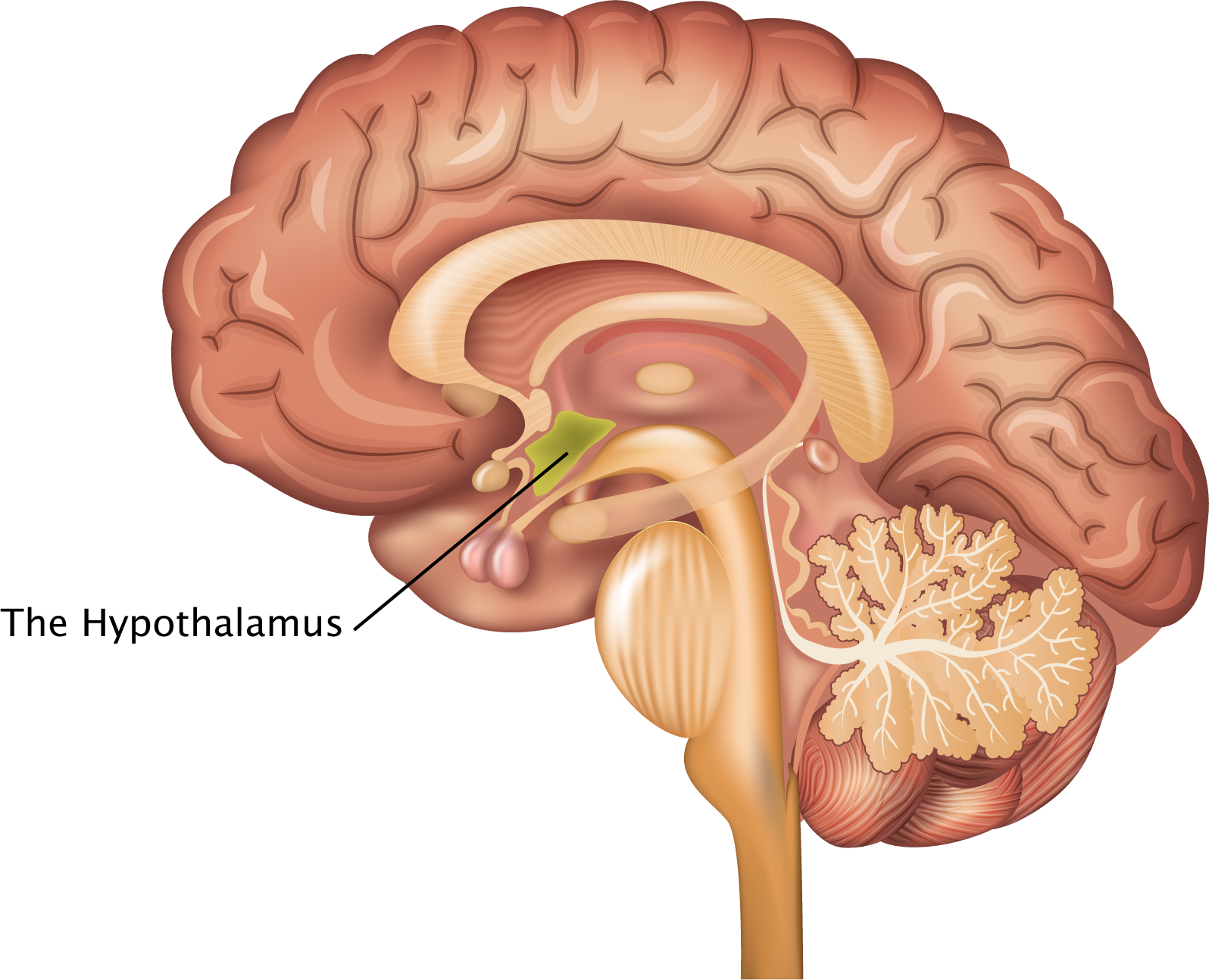
Figure 1: The anatomical location of the hypothalamus in the brain.
cc: The Webb Lab at Brown University’s Center on the Biology of Aging
Structure and nuclei
The hypothalamus structurally consists of three-dimensional neuronal structures called nuclei, each with different functions. The hypothalamus can be divided into four main zones: the preoptic, anterior, tuberal and mammilary regions. These zones can be furthe divided.These nuclei are involved in processes such as hormone secretion, temperature regulation, hunger and satiety, circadian rhythms, and emotional responses. Each nucleus has specific roles and connections with other parts of the brain and body, making the hypothalamus a central coordinator for maintaining homeostasis and coordinating endocrine and autonomic functions.
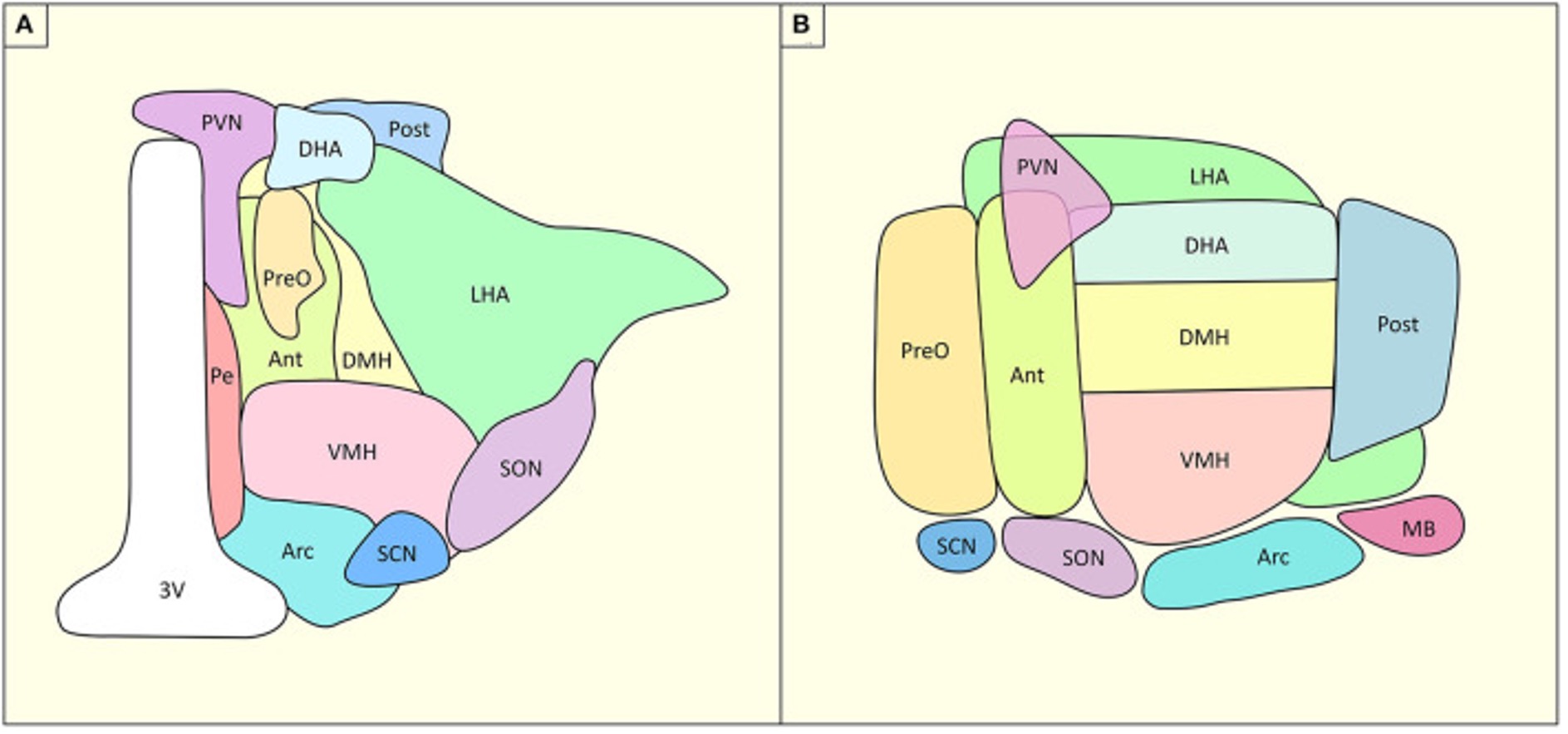
Figure 2: a) The neuroanatomical regions of the hypothalamus according to the preoptic model. Coronal section of the hypothalamus b) Sagittal sections of the hypothalamus.
Copyright © 2022 Roger, Lasbleiz, Guye, Dutour, Gaborit and Ranjeva.
Table 1: The hypothalamic nuclei.
| POA | Preoptic Area |
| MnPO | Median Preoptic Nucleus |
| MPO | Medial Preoptic Nucleus |
| VLPO | Ventrolateral Preoptic Nucleus |
| AVPV | Anterolateral Periventricular Preoptic Nucleus |
| Pvpo | Periventricular Preoptic Nucleus |
| AH | Anterior Hypothalamus |
| SON | Supraoptic Nucleus |
| SCN | Suprachiasmic nucleus |
| PVN | Paraventricular Nucleus |
| LH | Lateral Hypothalamus |
| DMH | Dorsomedial Nucleus |
| VMH | Ventromedial Nucleus |
| Arc | Arcuate Nucleus |
| TuN | Tuberal nucleus |
| PM | Premammillary Nucleus |
| SuM | Supramammillary Nuceus |
| TM | Tuberomammillary Nucleus |
| PH | Posterior Hypothalamus |
| SON | Supraoptic Nucleus |
Hunger and Satiety
There are 5 nuclei associated with food intake. These are the paraventricular nucleus, the dorsomedial and ventromedial nucleus, the lateral nucleus, and the arcuate nucleus. The PVN plays a role in feeding behavior and energy expenditure. It contains neurons that produce oxytocin, CRH, and TRH that can influence feeding behavior through their effects on other brain regions. The ventromedial nucleus is the satiety center of the brain. Disruptions in this nucleus lead to excessive eating and obesity in animal models. The lateral hypothalamic area is involved in promoting feeding behavior. Lesions in this area can lead to malnutrition. The dorsomedial nucleus is involved in the regulation of energy balance and feeding behavior. The arcuate nucleus contains two types of neurons with opposing functions. One is orexigenic, meaning they stimulate food intake, and the other is anorexigenic, meaning they suppress food intake.
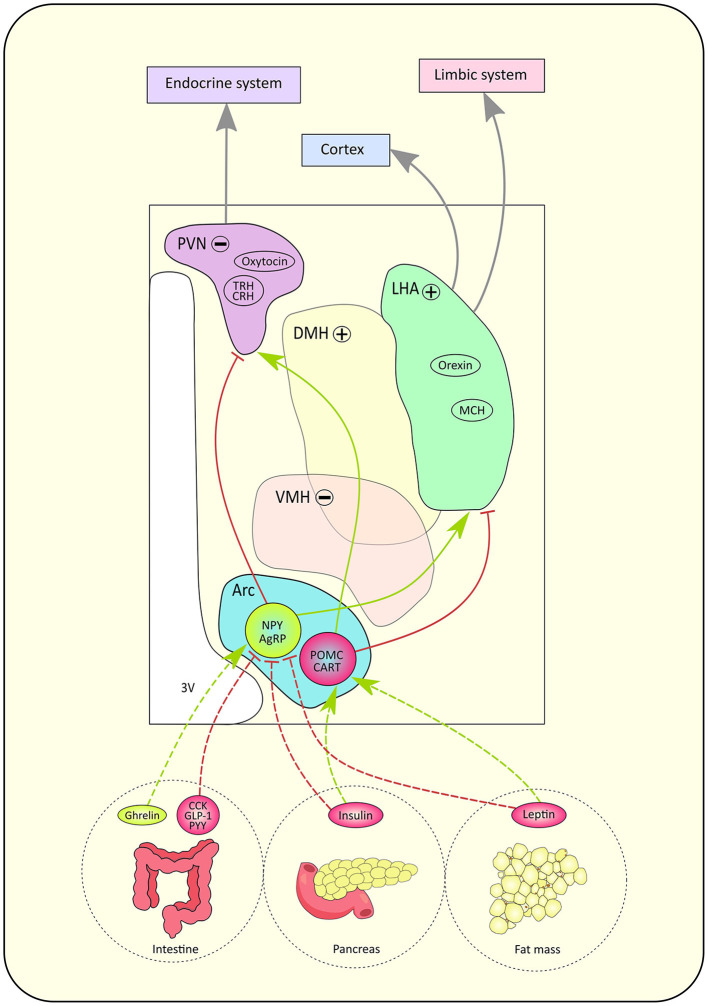
Figure 3: The PVN, DMH, VMH, LH and Arc all play a role in maintaining the food and water intake and energy metabolism.
Copyright © 2022 Roger, Lasbleiz, Guye, Dutour, Gaborit and Ranjeva.
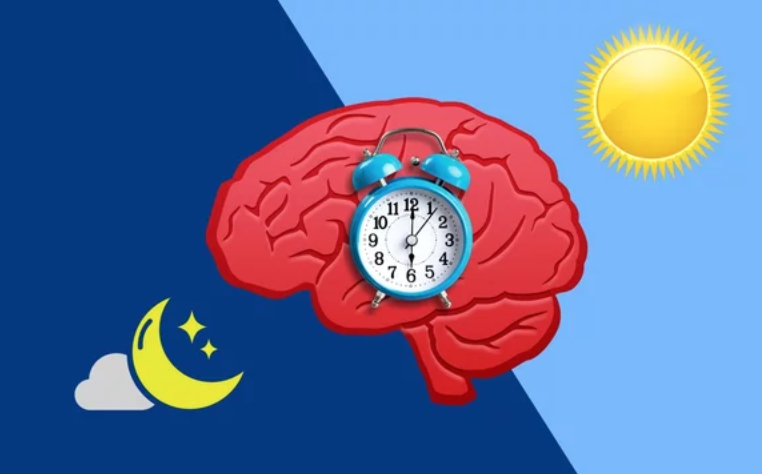
Figure 4: The SCN regulates circadian rhythms in mammals.
Circadian Rhythms
The SCN plays a crucial role in regulating circadian rhyt release, and body temperature, with the external environment. It receives direct input from the eyes, allowing it to adjust to changes in light and dark. This synchronization ensures that the body's internal rhythms remain aligned with the day-night cycle, promoting optimal functioning and health.
Hinke Boer, Fons Brauers, Andy Louter, Lindsey Pennaertz, Aisha Raja and Tonny Mulder - University of Amsterdam